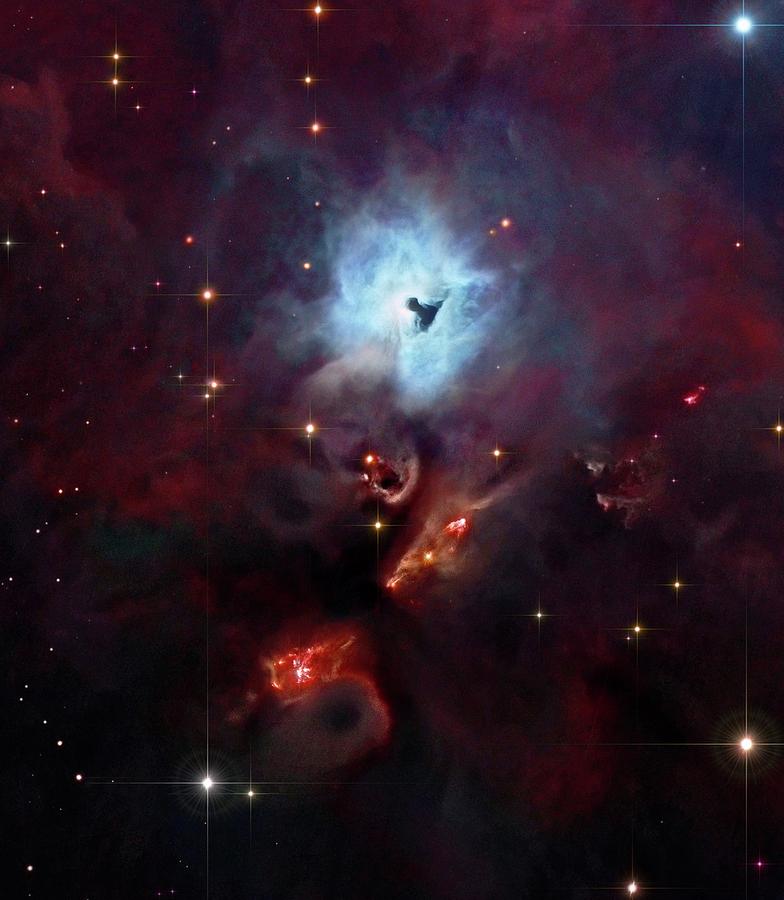Ann wrote: ↑Wed Mar 07, 2018 7:10 am
... Personally I'm really fascinated by NGC 1999, the blue reflection nebula that has a little black man poking his head out of it! Actually, of course, the "man" is a hole in the nebula. But the hole is intriguing in itself. How did it get there? Well, with so many jets in the area, I guess one of them hit a bulls eye in NGC 1999 and left the man-shaped black emptiness there! (I was about to write "the man-shaped black hole", but that wouldn't have been so good, would it?) ...
Ann
Ann, I too was quite intrigued by that hole in the reflection nebula. To me, it looks like the shape of a black chess pawn (tilted sideways). I think your conjecture of a jet must be correct (
http://herschel.cf.ac.uk/results/ngc1999-hole-space agrees with you). That page also updates an earlier conjecture on the Hubble site at:
http://hubblesite.org/image/952/news_release/2000-10 that had guessed the blackness was a Bok globule. But Herschel's data dispelled that idea, and it has since been decided that it really is a hole. (I'd love to see an image with sufficient resolution to see some far-away light coming through the hole.)
The Hubble link identified the star just to the left of the hole, that is producing the reflection nebula, as V380 Orionis. The Wikipedia article on it notes that this is actually at least 3 stars and a brown dwarf, and considers the hole to have been produced by this group:
One of the component stars of V380 Orionis appears to have launched a polar jet that helped to clear the keyhole-shaped hole in the surrounding nebula known as NGC 1999.
https://en.wikipedia.org/wiki/V380_Orionis
the original source for that conclusion being referenced there to:
https://photojournal.jpl.nasa.gov/catalog/PIA13109.
I don't know how crazy the following idea is, but I could imagine that these stars made that hole, and have moved aside from it, or perhaps quieted down, and the hole is now beginning to fill back in, as the gas begins to expand back into the region. That's the best sense I can make of its very odd shape.
 Arcs, Jets, and Shocks near NGC 1999
Arcs, Jets, and Shocks near NGC 1999
